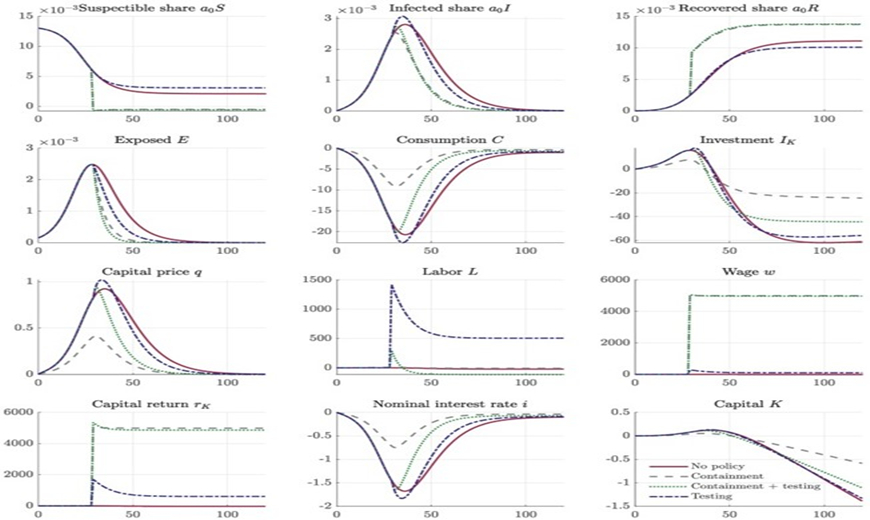
ABSTRACT
This paper proposes a susceptible-infected-removed dynamic stochastic general equilibrium (SIR-DSGE) model to assess the macroeconomic impact of the recent COVID-19 outbreak. The parameters of the SIR setting are calibrated to COVID-19 data from China. Using the model, we illustrate how the pandemic could result in consumption and output loss. We show that a combination of quarantine policy and random testing of the uninfected is effective in reducing the number of infected individuals and outperforms the alternative scenarios in which only one of the policies is implemented. Moreover, the economic impacts of both policies are evaluated. Compared with the decentralized equilibrium, we find that the Ramsey social planner allows output to decrease more substantially during the pandemic, in exchange for a faster economic recovery.
KEYWORDS
DSGE model; SIR model; COVID-19
JEL CLASSIFICATION
E30; E58; I10
China Economic Review
https://doi.org/10.1016/j.chieco.2021.101725
